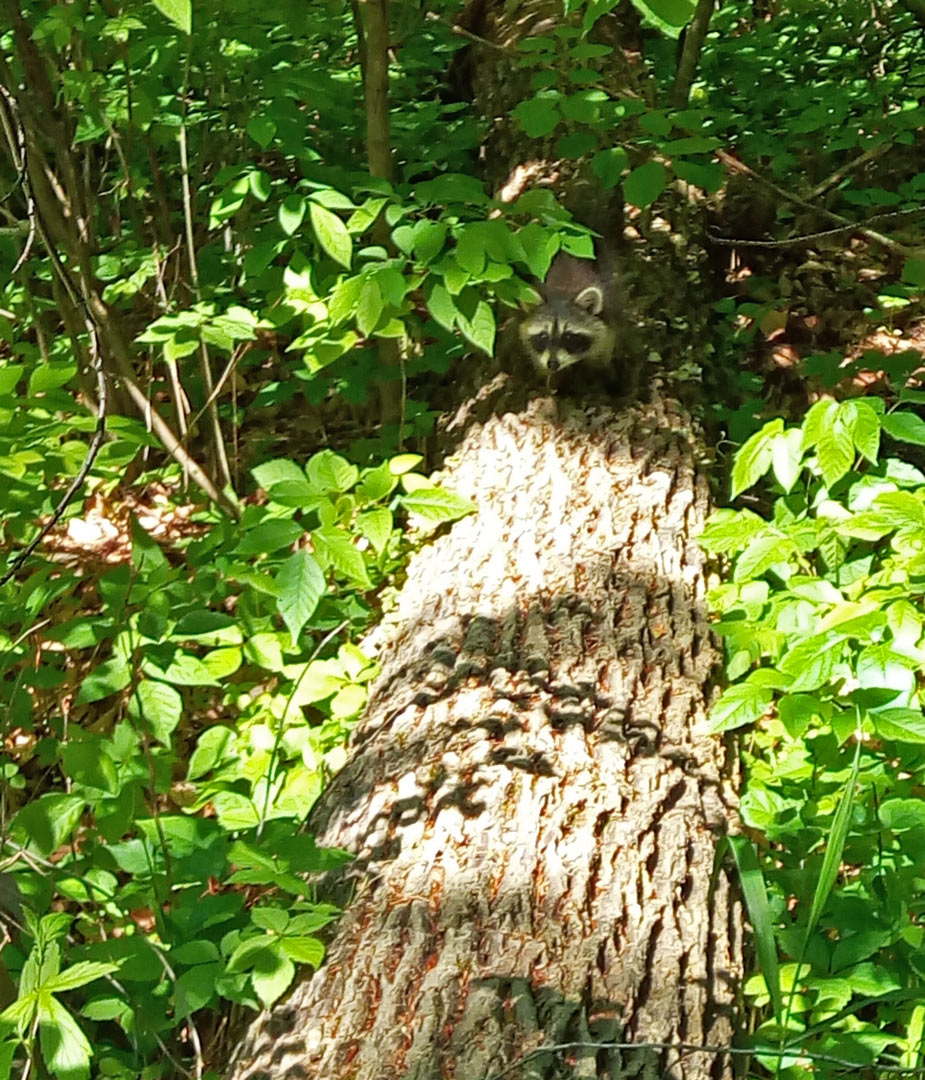
Late spring is the perfect time to get outside and enjoy a romp through the parks. My personal favorite is going for a hike shortly after a rain. There is something magical to me about the woods when the air is still cool and tiny rain droplets cling to rejuvenated leaves. I love the sights and smells, and especially seeing all the life around me start to perk back up again. Occasionally, I am rewarded with the greatest experience—coming across baby wildlife. Whether it be a bedded down fawn or tiny birds chirping in a nest, it’s hard not to get excited about these cute little creatures.
While hiking at Blacklick Woods last week, I spotted a baby raccoon hiding in the shadows on a fallen tree. As I snapped a picture, it tentatively started to walk towards me. At such a young age this raccoon has already learned not only to not be fearful of people, but to actively seek them out. This means it may have been fed by someone, who probably thought they were doing a good thing for the raccoon.
Feeding wild animals is actually a detriment to them. They have all the resources they need to live in the wild, and may not learn the skills needed to use them if they become reliant on people. Yes, even throwing them one scrap is enough to start teaching them to come to people for food (especially since you’re not the only one doing it).
Nor do wild animals gain the necessary nutrition to keep them healthy when they eat foods that are not natural to them. This is particularly important for young animals. When they become adults, these animals often become nuisances and potentially hazardous to themselves or to people. It’s adorable when a baby raccoon approaches you on the trail, but I bet most people wouldn’t feel the same about an adult.
Respect wildlife by keeping them wild. Observe and appreciate, but try not to disturb them. The best thing you can do if you love seeing wildlife is to contribute to making sure they have plenty of healthy, natural habitats to thrive in. Educate yourself and others on healthy ecosystems and then see how you can help. A great way to start is by making a few simple changes in your own backyard to make it more wildlife friendly.
Here are a few links to help you get started:
Garden for wildlife (National Wildlife Federation)
Backyard enhancement for wildlife (OSU School of Natural Resources)
The wildlife will thank you!
ALYSSA BALTER
Restoration Ecologist
